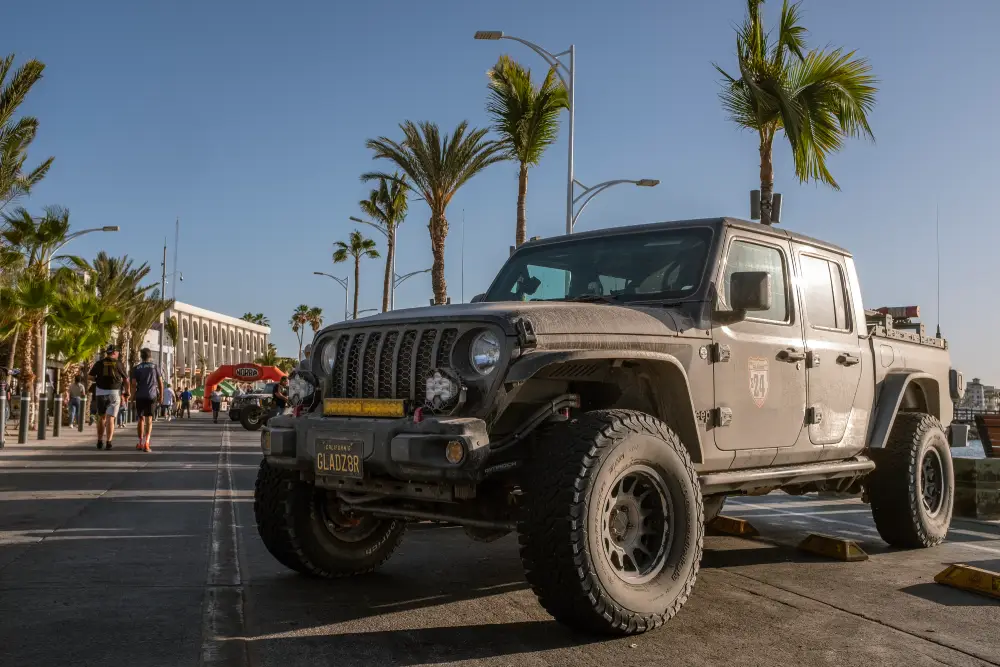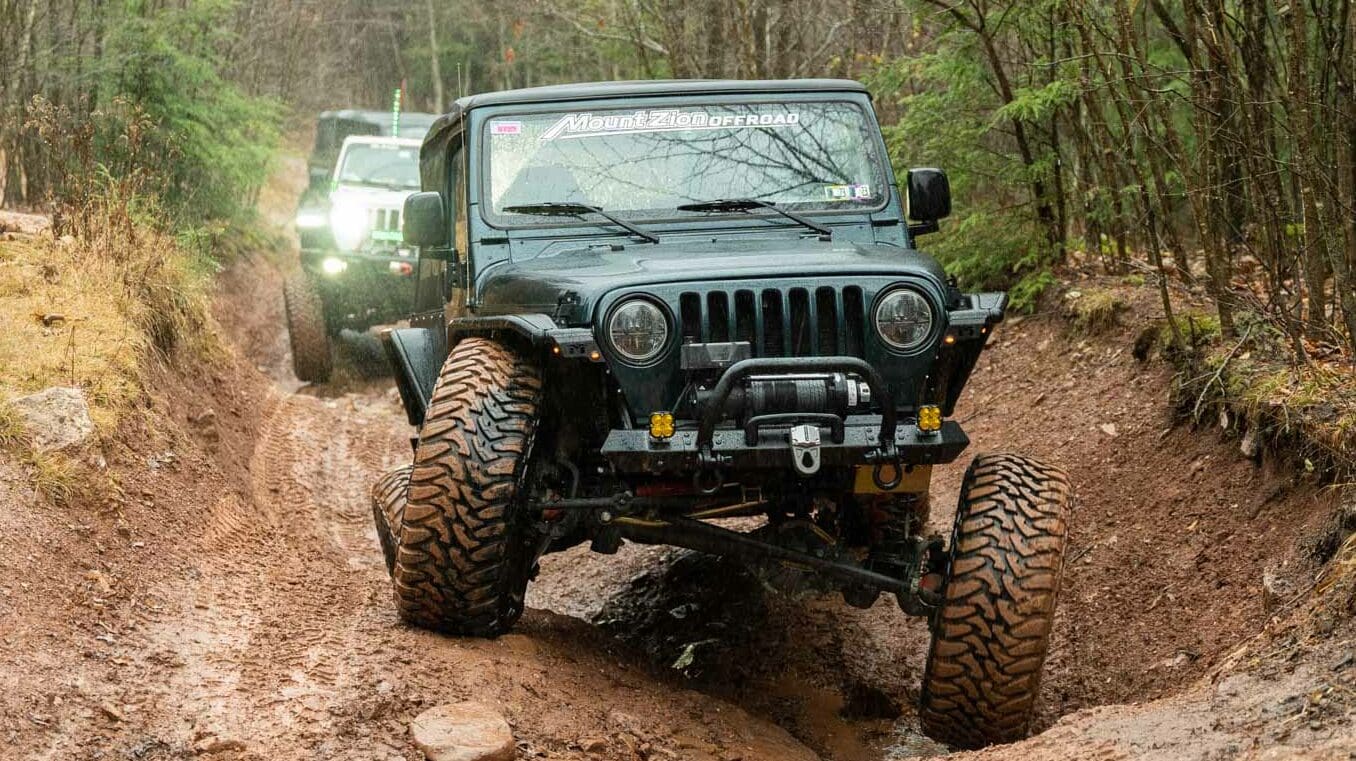Lift or Wheel Travel – Which is Better?
When considering suspension upgrades for your off-road vehicle there are 2 metrics typically discussed. For most enthusiasts the amount of “Lift” or how high the vehicle will now sit, is the most common metric. This is a simple way to visualize what the vehicle will look like, and what larger size tires could possibly fit. Lift size also allows the user to generate a better understanding of approach, breakover, and departure angles.
Another important metric, that is more commonly used in off-road racing, is wheel travel. The more wheel travel the better the vehicle can handle all types of obstacles. Race vehicles, like trophy trucks, all already run 40in tires and have roughly the same ride height, so this makes discussing suspension setup from a “lift” perspective beside the point. For them it is all about wheel travel, and lots of it. Trophy trucks can have as much as 36in of rear wheel travel and more than 24in of front wheel travel, but they are also specifically designed for off-road racing and not daily driving.
When it comes to upgrading your daily driver to perform better off road it is important to consider both lift and wheel travel when comparing various brands and options.
Often times “lift kits” only state the overall lift, but a key metric to comparing brands is to understand what the possible wheel travel is. For example, for the Jeep Gladiator there are lots of 4in lift kits, but they all do not perform the same. Some kits, like spacers, only allow for 8-10 inches of wheel travel, some, like those with tuned springs, shocks, and control arms, might allow for up to 14. And some advanced systems allow for up to 18! These are all priced differently as they should. 18in of wheel travel while having the same ride height will perform exponentially better than one that only has 8, 10 or 14in of wheel travel.
The Purpose of Suspension Upgrades
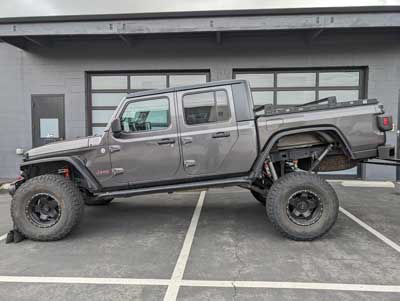
Lift kits improve a vehicle’s off-road capabilities by raising the chassis, which increases ground clearance and allows for larger tires. This setup enhances traction, enabling better handling on challenging terrain like boulders, ruts, and off-camber obstacles. The more advanced the suspension setup the more challenging the environment the vehicle can handle. To maintain safety and performance, it’s crucial to choose components and systems that align with the vehicle’s specifications, driver skill, and intended use. Additionally, it is important to follow proper installation guidelines to avoid issues like poor handling, risk braking components, and putting riders at risk of injury.
Understanding Wheel Travel

Wheel travel refers to the vertical distance the suspension allows the wheels to move when measured at full bump (maximum up travel) to full droop (maximum extension). Increased wheel travel is essential for off-road vehicles, as it allows the tires to maintain better contact with the ground, improving traction and stability over obstacles. This movement helps absorb shocks from bumps and whoops, making for a smoother ride in challenging conditions. More wheel travel also results in better off-camber flexing over large obstacles when rock crawling too. However, if not designed or built correctly, it is possible that the suspension goes into bind which then limits its’ capabilities resulting in lower than desired performance.
Factors to Consider for Maximizing Wheel Travel
Maximizing wheel travel involves considering key factors such as the suspension setup, including the shocks, control arms, sway bars, and springs. Proper suspension geometry is critical for ensuring that wheel travel doesn’t negatively impact handling. Additionally, clearance for larger tires is necessary to avoid rubbing or interference. When driving at higher speeds on trails greater wheel travel will provide a smoother and more stable ride. However, to maximize the performance of any suspension upgrade it is important to spend a little time tuning which could include re-valving or adjusting the shocks to match the terrain the vehicle is driving on.
Vehicle Compatibility for Suspension Upgrades
When considering vehicle compatibility for lift kits, it’s essential to ensure that the lift kit is designed for your specific vehicle make and model. Different vehicles have unique suspension systems, so using a lift kit not tailored to your vehicle can lead to poor handling, alignment issues, or even damage to suspension components. Always check manufacturer recommendations and, if possible, consult with professionals to choose the right lift kit for your vehicle to maintain performance and safety.
Choosing the Right Suspension Upgrade Kit for Your Vehicle
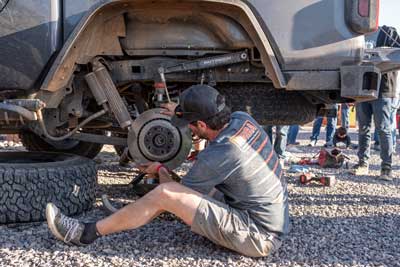
Choosing the right lift kit for your vehicle requires careful consideration of factors like intended use, driver skill level, and budget. Different kits have different performance characteristics which results in different price points.
A kit that just has spacers doesn’t really improve performance aside from maybe allowing the driver to run slightly larger tires (depending on application). This is because a spacer kit does not result in longer springs and shocks which therefore does not increase wheel travel at all. Now a spacer kit is typically very cheap which might be all someone needs to get out and test the waters in some light off-roading. These typically max out at 4in of resulting lift
Kits that have shocks, springs, and sway bar extensions are your next level up from a performance standpoint. These kits can result in the same height as a spacer kit, but now have longer shocks and springs in place of a spacer block. This means more wheel travel which equals better off-roading performance. These typically max out at 4in, however there are some that advertise 6, but they do not include control arms to adjust pinion angle or alignment which causes handing issues.
Higher performance kits will include shocks, springs, sway bar link extensions (or aftermarket sway bars), adjustable control arms (important for pinion angle and alignment), extended brake lines, and sometimes geometry correction brackets. These kits range in price usually driven by the performance level of the shock, but regardless, are more expensive than the 2 previous types of kits discussed. These kits typically result in a 4-8in lift while providing the most wheel travel. A 4in lift comprised of these components will easily have 50% or more-wheel travel when compared to the other two levels. Additionally, performance level of the shock becomes more critical as wheel travel increases, which we will save for another post.
In these 3 generalized breakdowns of various kits, you can see that all could achieve the same “lift” but all 3 perform vastly differently. In riding trails, we have seen vehicles with the basic kit take 2-3 hours on a trail while those with the advanced kit take under 30 minutes. The important thing to remember is what your goals are for your vehicle, your driver skill, and your budget.
Safety Considerations for Suspension Upgrades
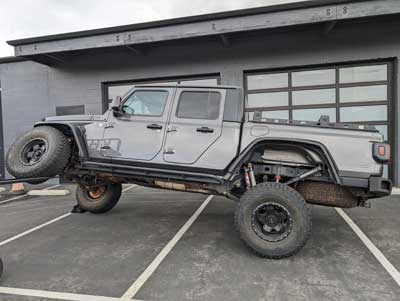
When upgrading your suspension, safety and avoiding common mistakes are critical. Ensuring compatibility with your specific vehicle model is essential to prevent handling and alignment issues. Improper installation can compromise control, so professional installation is highly recommended. Additionally, be mindful of the vehicle’s center of gravity, as a higher stance can increase rollover risks. Following manufacturer guidelines for installation and regular maintenance checks are vital for maintaining long-term safety and performance, especially when driving off-road. Always complete an alignment at a certified shop prior to use and be sure to check and re-torque all hardware after the first each offroad adventure. The pro’s always double and triple check torque, so should you!
Metrics working together – Lift and Wheel Travel
When choosing between lift kits and increased wheel travel, it’s important to consider your vehicle’s intended use. Lift kits provide insight into ground clearance and tire size compatibility while wheel travel provides a better understanding of the vehicle’s ability to navigate rough terrain by keeping the tires in better contact with the ground. Both metrics should be used together to provide the best overall understanding of how the suspension kit will perform.
FAQs
How does wheel travel affect off-road performance?
Increased wheel travel allows for better traction and stability by keeping tires in contact with uneven terrain. This translates to tackling trails at higher speeds or overcoming larger obstacles while crawling all while maintaining a more controlled rode.
What is the main benefit of installing a lift kit?
Lift kits provide increased ground clearance, allowing for larger tires and improved off-road capability.
What are common mistakes to avoid when installing a lift kit?
Common mistakes include improper installation, using incompatible parts, and neglecting alignment checks, not properly torquing components, and torquing things when the vehicle is not sitting at ride height (when joints use rubber/urethane bushing)
Is professional installation necessary for lift kits?
It is recommended that you have professionals install suspension upgrades and perform an alignment once done. Those who do it themselves typically have experience with these types of things. Some kits are basic, and some kits require welding and additional custom fabrication. You should always check with a local professional before attempting to do any work on your own.
Which metric is better for off-roading: lift or wheel travel?
Both are important to understand the intended performance. Lift is a good start to understand how the vehicle will look and what tires could fit, but wheel travel is what really provides insight into the types of obstacles you can overcome (big boulders, ruts, high speed whoops, etc.)
What should I consider when selecting a suspension upgrade for my vehicle?
You should consider your vehicle’s make, model, and intended off-road use to ensure the kit is compatible and meets your performance needs while also acknowledging your driving skill level to ensure proper function of the vehicle and safety of driver and passengers.
How can I avoid damaging my vehicle when upgrading the suspension?
Ensure that your suspension components, such as shocks and control arms, all work together properly. Make sure the alignment has been done and is within spec, all hardware is properly torqued to spec, and checked after each offroad adventure. Most importantly, when installing suspension upgrades you need to cycle the suspension to check that things do not bind, clearances are ok, and nothing gets pinched (like a sensor wire for example)
How does a suspension kit impact my vehicle’s center of gravity?
Any suspension kit raises the vehicle’s center of gravity over what it is from the manufacturer can affect stability and increase the risk of rollovers if not properly managed.

